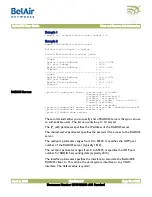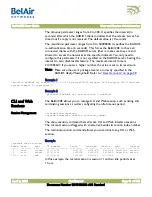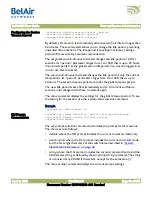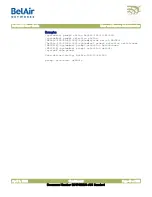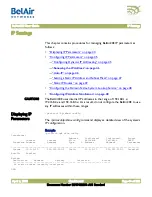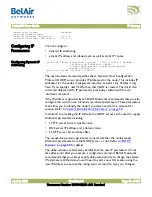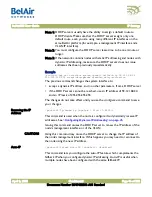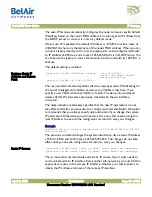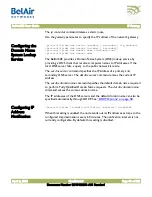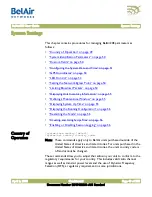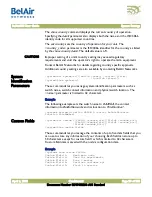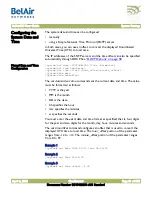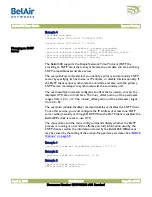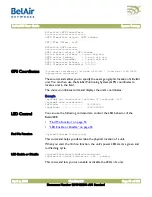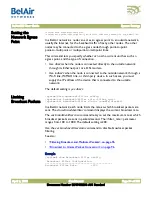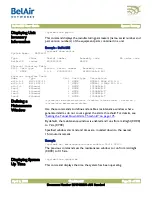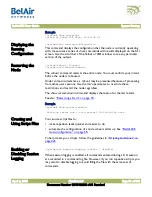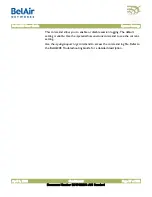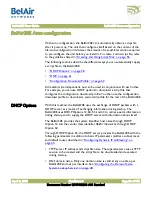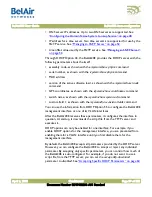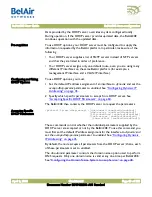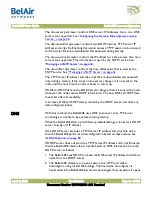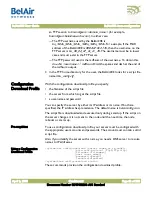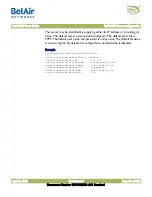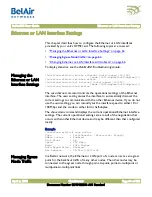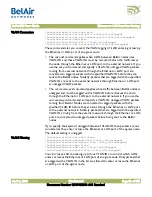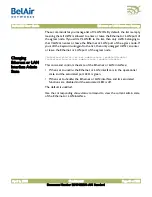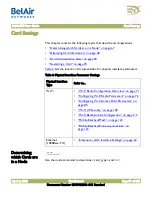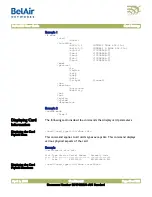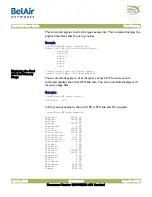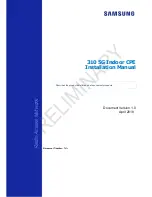
BelAir20E User Guide
System Settings
April 2, 2012
Confidential
Document Number BDTM02201-A01 Standard
Setting the
Network Egress
Point
/system/show system-egress-point
/system/set system-egress-point {yes {direct|indirect gateway-ip <ip_addr>}|no}
In a BelAir network, a node can act as an egress point to an outside network,
usually the Internet, for the backhaul traffic of many other nodes. The other
nodes may be connected to the egress node through point-to-point,
point-to-multipoint or multipoint-to-multipoint links.
This command lets you specify whether or not the current unit has such an
egress point, and the type of connection.
• Use
direct
when the node is connected directly to the outside network
through its Ethernet port or a DSL modem.
• Use
indirect
when the node is connected to the outside network through a
Wi-Fi link, WiMAX link, or third-party device. In such cases, you must
supply the IP address of the device that is connected to the outside
network.
The default setting is
yes direct
.
Limiting
Broadcast Packets
/system/show broadcast-filter config
/system/set broadcast-filter rate <filter_rate>
/system/set broadcast-filter status {enable|disable}
In a BelAir network, each node limits the rate at which broadcast packets are
sent. The
show broadcast-filter
command displays the current broadcast rate.
The
set broadcast-filter rate
command lets you set the maximum rate at which
broadcast packets are sent in packets/second. The <filter_rate> parameter
ranges from 100 to 1000. The default setting is 200.
Use the
set broadcast-filter status
command to disable broadcast packet
filtering.
See also:
•
“Filtering Broadcast and Multicast Packets” on page 96
•
“Broadcast to Unicast Packet Conversion” on page 96
Example
/system# show broadcast-filter config
Broadcast Filter Configuration
---------------------------------------------
Broadcast Filter Rate :200

